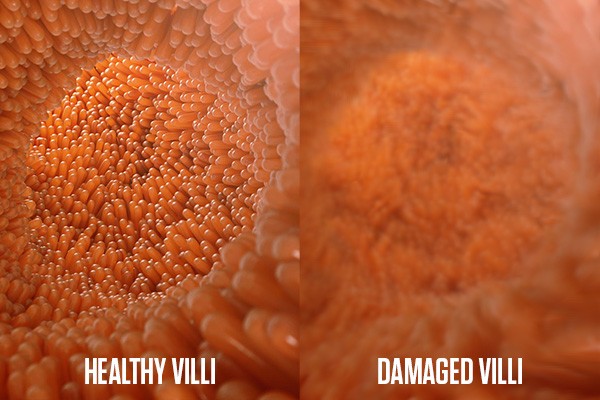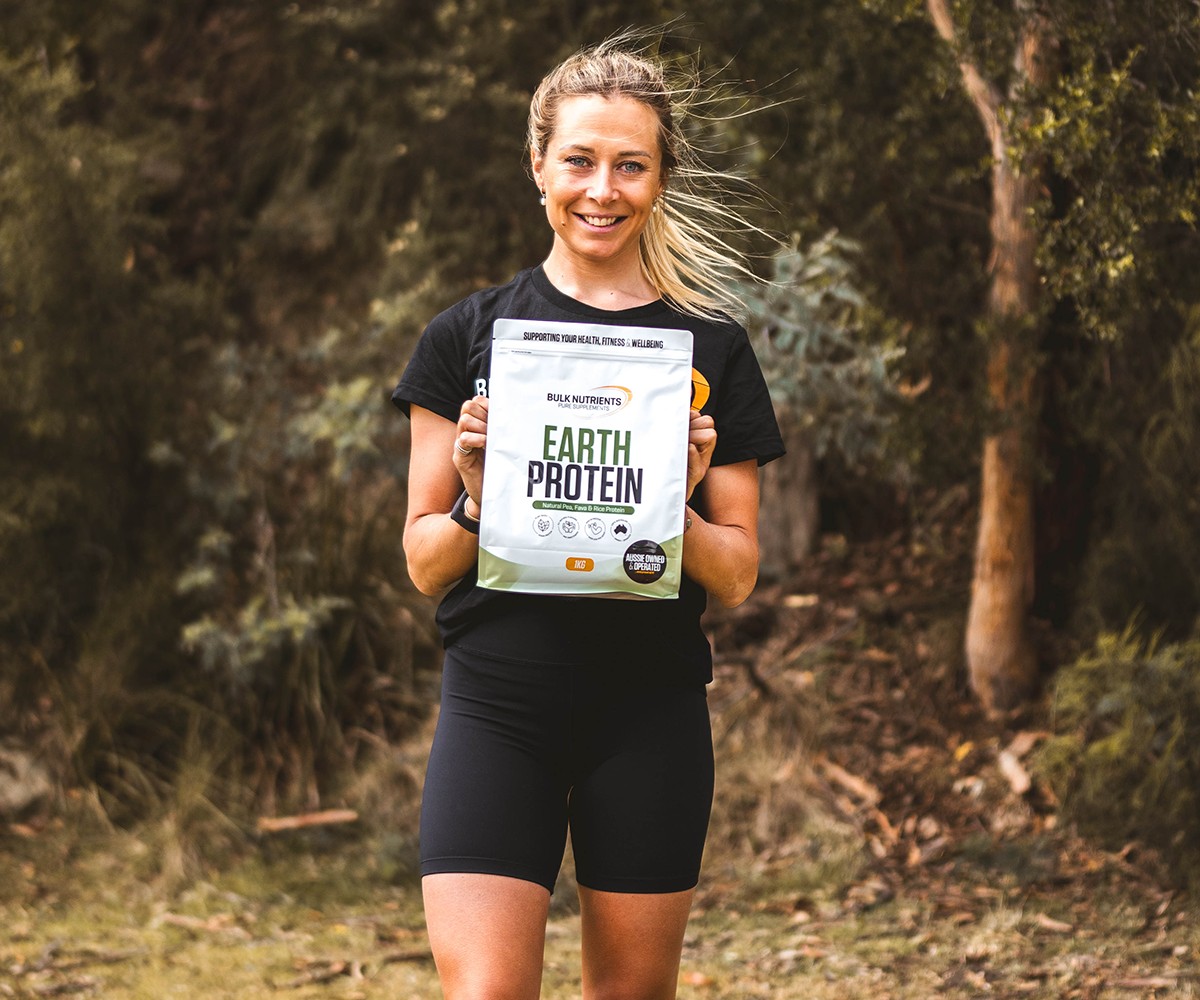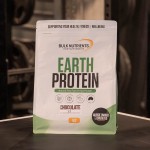Coeliac Disease - What is it? Who does it effect? How is it treated?

Coeliac Disease (CD) - What is it?
We’ve all heard of ‘gluten-free this’ or ‘gluten-free that’, but how does that relate to CD? Comparatively speaking, gluten’s effects on someone with CD is the equivalent to kryptonite’s effects on Superman. Ok I’m a bit of a DC [and Marvel] fan :)

CD relates to an individuals’ immune system reacting abnormally when exposed to gluten causing damage to the small bowel. Gluten is a protein found in many common grains including wheat, rye, barley, and oats.
In our bowels, we have teeny-tiny finger-like projections that act as structures that increase the surface area of the bowel for nutrient absorption. When an abnormal reaction occurs due to gluten exposure in someone with CD, these projections become inflamed and flatten out. Imagine extending your fingers out on your hands *go on.. do it now while reading this*.. then make half a fist with only your fingers flexed in. This new shape of your fingers is essentially what these projections would now look like, thus decreasing surface area.

The technical term for this flattening and inflammation response is coined villous atrophy. This response can lead to a variety of gastrointestinal and malabsorptive symptoms including abdominal pain, diarrhoea, bloating, excessive wind, lethargy, poor concentration, and general aches and pain.
These symptoms can be caused by chronic inflammation in other parts of the body too. To read more about the different types of inflammation you can head over to another recent article I wrote which covers this topic here.
Differences between CD and non-coeliac gluten sensitivity
There is also another situation where people experience ‘non-coeliac gluten sensitivity’. The cause and treatments behind this are not as well understood as the approach with someone with the autoimmune disease itself (CD). The symptoms may be linked to Irritable Bowel Syndrome and foods that fall into the fermentable oligosaccharide, disaccharide, monosaccharide, and polyols (FODMAP) category. FODMAPs are short-chain carbs (sugars) that the small intestine absorbs poorly.
Who gets CD?
CD is non-discriminatory. It can affect both men and women of any age. To have CD you must have a genetic predisposition with a particular set of genes including HLA DQ2 and HLA DQ8. You’re welcome, you have now completed a 2-second course in genetics. While about half of the population have one or both of these genes, only about 40% of them will develop CD. When CD begins to develop in an individual it may be due to environmental factors triggering the CD itself when we are babies, when we are adolescents, or when we are adults.
Nowadays, CD affects about 1 in 70 Australians. Interestingly though, only about 20% of these people are diagnosed. Therefore, 80% of those living with CD don’t even know they have it yet. With such a high number of Aussies living with CD, it’s now quite obvious why society has had to adapt foods, supplements, and social provisions to meet these individuals' dietary requirements.

A great example is going to a café and the waiter or waitress hands you a specifically designed gluten-free menu, or more commonly you can identify every meal that is gluten-free or that can be made gluten-free upon request. On the other hand, less qualified venues still exist where they haven’t yet caught up on how to train staff on the importance and awareness around CD.
This can usually be identified by being asked
“So, are you like full gluten-free or just a little bit gluten-free?”.
This should usually be a bit of a red flag to those ordering meals or drinks out as it doesn’t incur much confidence to the purchaser that whatever they receive will be completely gluten-free.
Companies Adaptations
I have had CD for 20+ years, starting in circa 1999 when I was about 6 years old. For me, at the time I was about 1 in 5000 people in Australia who had CD. So obtaining gluten-free products was tricky due to limited accessibility at the end of the millennia. Let alone being quite costly and poor quality.. ok the latter is subjective but you get the idea [hopefully].
In combination with that, I was also quite underweight as a kid for my age which may have been associated with underconsumption of appropriate foods. However, interestingly though, some research has found that CD can be associated with normal weight as well as being overweight or obese.
Now with the prevalence of CD being 1 in 70, the ability to obtain higher quality, more reasonably priced products is much easier. I am so grateful for Bulk Nutrients (BN). Why? Because I’ve spent over 2 decades navigating supermarkets shelves trying to differentiate between what’s economically feasible, high quality, and readily accessible, compared to what’s not. This is where BN stands out from the crowd. For those who need the extra nutritional support, BN offers a huge variety of products that contain gluten-free ingredients.

Considerations for Athletes
In Australia, when you go and buy bread flour it is fortified with thiamine (and iodine). The majority of other wheat-based cereal products are also fortified with other B vitamins (including thiamine), iron and folate. Comparatively speaking, gluten-free products typically contain less fibre, less folate, and less thiamine than their counterpart wheat-based products. It’s been shown that athletes likely have higher iron, folate, and B vitamin requirements compared to people who are far less physically active.
It’s been found that this athletic population are at quite an increased risk of below optimal intakes of these particular nutrients. This is why a balanced diet is crucial, and, with the support of supplements if indicated, can help an athlete get the nutrients they need. Based on the variety of gluten-free products BN’s offers, can benefit those with CD who may be faced with limited food options throughout the week.
Comorbidity Considerations
Thanks to genetics, CD can be linked to other autoimmune conditions in an individual such as autoimmune thyroid disease and type 1 diabetes. Due to this, it’s important that if you suspect you might have CD or unexplained symptoms associated with food consumption it will pay to go see your General Practitioner sooner rather than later. The sooner a diagnosis can be made [positive diagnosis] then the likelihood of the development of thyroid disease or type 1 diabetes can be mitigated. There is also some evidence to show that early detection can decrease the risk of these health concerns ever occurring.
Treating Coeliac Disease
Lifelong adherence to a gluten-free diet is currently the gold standard as the only medical treatment on how to tackle CD. This is because the response of the immune system to gluten exposure is permanent and there to stay. Unfortunately, you can’t occasionally sneak in a cheeky cheeseburger or a chicken schnitty thinking it won’t cause an inflammatory response in your bowels. What’s also worthwhile to consider, is that an individual may not have any physical symptoms occurring that they can notice. However, there will still be a reaction of villi inflammation, damage and/or destruction. Significant damage may be due to the amount of gluten consumed and how long the exposure to gluten lasts. Though, the severity of response may be variable between people. Once an individual can get back to strict adherence to a gluten-free diet, symptoms can usually be resolved within 2-8 weeks.

For some, 2-8 weeks is ‘water off a duck's back’. But, if you enjoy being highly physically active or are a competitive athlete, 2-8 weeks of sub-optimal training/no training can significantly affect your aerobic, strength, power, and strength endurance capacity. Specific time-frames on the breakdown of how quickly this diminishment occurs will be saved for another article as it delves more into exercise physiology.
Summary
Hopefully, this article has provided a bit of an insight into the physiology behind CD, where it comes from, and how to treat it. Following a strict gluten-free diet can be overwhelming, expensive, and tricky to navigate when it comes to the millions of food and drink products available on the market. What would be my number one rule for ANYONE who needs to follow a gluten-free diet is: find companies and organisations that you trust and that offer completely gluten-free products using gluten-free ingredients and stick with them. This same approach goes for café’s, restaurants, and supplement companies. At least in the beginning anyway, once you become more comfortable with understanding nutrition panels, how to communicate with staff at food venues, and how to navigate a supermarket more effectively.

Max Cuneo is a physiotherapist, nutritionist and sports trainer with a passion for health and wellbeing. He has competed in many sports including sailing and bodybuilding, and is working towards his Masters in Public Health.
More about Max CuneoReferences:
- Burke, L. & Deakin, V. 2015. Clinical Sports Nutrition, Australia, McGraw-Hill Education.
- Coeliac Australia. n.d-a. Coeliac Disease [Online]. Available: https://coeliac.org.au/learn/coeliac-disease/ [Accessed 15 June, 2021].
- Coeliac Australia. n.d-b. Conditions Associated with Coeliac Disease [Online]. Available: https://coeliac.org.au/article/associated-conditions-cd/ [Accessed 15 June, 2021].
- Coeliac Australia n.d-c. Villi comparison https://coeliac.org.au/article/coeliac-disease/.
- Ghiselli, A., Bizzarri, B., Gaiani, F., Semeraro, F., Iuliano, S., Di Mario, F., Nouvenne, A., Kayali, S. & De’ Angelis, G. L. 2018. Growth changes after gluteen free diet in pediatric celiac patients: a literature-review. Acta bio-medica de l'Ateneo Parmense, 89, 5-10.
- Lindfors, K., Ciacci, C., Kurppa, K., Lundin, K. E. A., Makharia, G. K., Mearin, M. L., Murray, J. A., Verdu, E. F. & Kaukinen, K. 2019. Coeliac disease. NAT REV DIS PRIMERS, 5, 3-3.
- Nenna, R., Mosca, A., Mennini, M., Papa, R. E., Petrarca, L., Mercurio, R., Montuori, M., Piedimonte, A., Bavastrelli, M., De Lucia, I. C., Bonamico, M. & Vania, A. 2015. Coeliac Disease Screening Among a Large Cohort of Overweight/Obese Children. J PEDIATR GASTR NUTR, 60, 405-407.
- Shahraki, T., Shahraki, M. & Hill, I. D. 2018. Frequency of overweight/obesity among a group of children with celiac disease in Iran. Prz Gastroenterol, 13, 127-131.
- Thompson, T., Dennis, M., Higgins, L. A., Lee, A. R. & Sharrett, M. K. 2005. Gluten-free diet survey: are Americans with coeliac disease consuming recommended amounts of fibre, iron, calcium and grain foods? J HUM NUTR DIET, 18, 163-169.
- Wild, D., Robins, G. G., Burley, V. J. & Howdle, P. D. 2010. Evidence of high sugar intake, and low fibre and mineral intake, in the gluten‐free diet. ALIMENT PHARM THER, 32, 573-581.
































